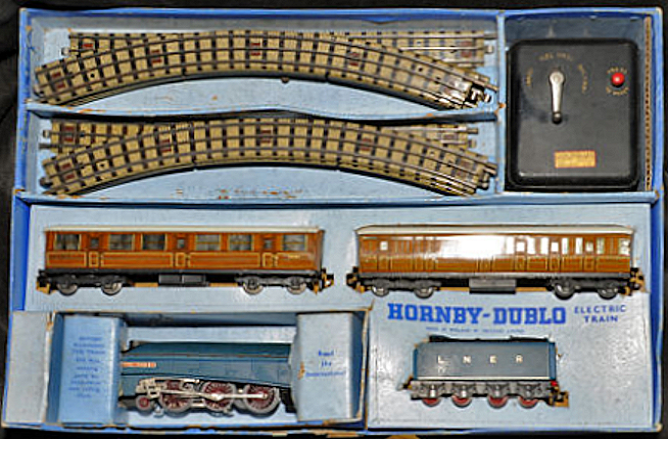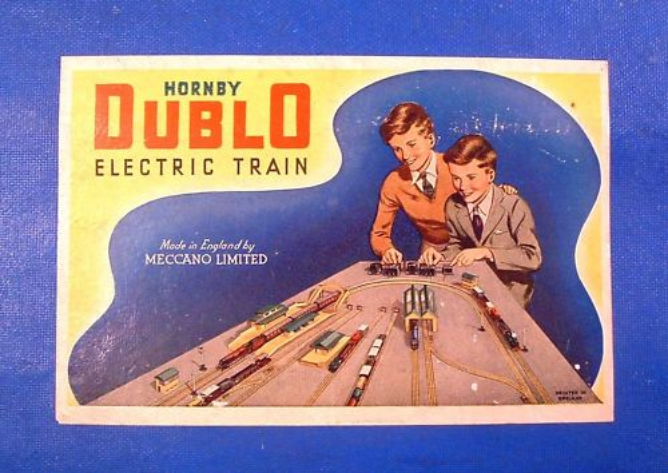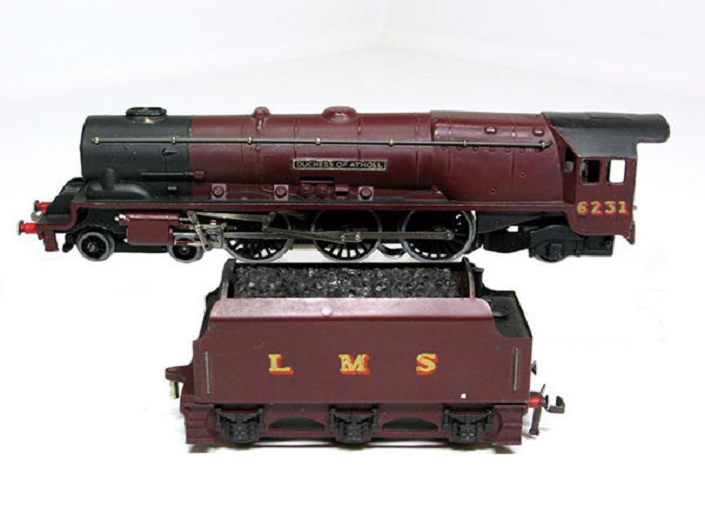Pat Heigham
Cue nostalgia!Meccano was my favourite kit. Even my cat would sit in the box of sharp angular pieces – he liked to join in.
I used to construct alpine cable cars, running from my first floor bedroom window to a tree outside. Also tram cars with a steerable front bogie. A Meccano motor drove the proscenium curtains of my home cinema installed in a garden shed, long
Also I went through the Hornby Dublo phase – still got some bits in the loft. Does anyone remember the rival Trix Twin, ‘cos the wheels were insulated from the axles, it was possible to run two trains on the same track (different power circuits). The box had a blank compartment labelled "space for second train"! Thus encouraging another Christmas present.
The Bayco box stirred memories. This was a building kit that one inserted upright wire rods into a perforated base, then slid building panels in between. My mother and I joined my father in Singapore in 1950. He had been posted there a year earlier, and saved his small change as pocket money, which I spent on a Bayco kit from a wonderful store called Robinsons. This was the first department store we had seen.
On returning to the UK, I was keen to get Hornby’s ‘Duchess of Montrose’ 00 loco from our next door neighbour who owned the main toy shops in the I.O.W. I was used to bargaining (at age 7) in Change Alley in Singapore and offered him a lower price than marked. Dad said that he was so amused with my boldness that I secured the said loco at the price I was prepared to pay!
Other Christmas musts, was the catalogue from Ellisdons full of William Brown-type japes and tricks – itching powder, SeeBackroScope etc.
Now 75 (2017), I would like to book a seat on Tardis back to 1950!
Geoff Fletcher
I loved Meccano. Started with a No.5 set as a Christmas present, and gradually added Sets 5A, 6A, 7A (this gave me an equivalent No.8 set), two sets of gears, the black rectangular clockwork motor, and finally a red electric motor. Alas – all sold off long ago. Colours were green and red with real brass nuts and bolts, couplings, pulleys, gears etc.Mike Jordan
My first exposure to entertainment aged probably about 8 was a load of string puppets – some home put together – with shows in home made theatre to relations with lighting from MES torch bulbs.I didn’t have Meccano (too expensive) but had Trix which was a similar product but with plain aluminium parts. Trainsets shared with friend were Tri-ang which were cheaper than Hornby but had proper sleepers rather than a metal pressed base and of course a variable rheostat for 12v control (none of this transistorised stuff from a laptop).
Then swiftly moved on to crystal sets at "big" school.
Meanwhile bedroom cupboard was full of home made record deck, power distribution (note all socket options and no RCDs of course) and lots of wooden boxes for nuts and bolts (still in use) and not overlooking the 3-in-1 oil cans
"Happy days".
Geoff Fletcher
More on Meccano. I had a couple of school friends – Tim and Charlie Raby. Their father was a wealthy local farmer and he bought them a Meccano No.10 set. It was magnificent – contained every Meccano part in the catalogue all housed in padded drawers with the part shapes cut into the pads, and all in a wooden "chest of drawers" arrangement. I was very envious of course, and have always wanted one ever since!Before I joined the BBC I worked in the R&D labs at GEC in Witton. Meccano was an indispensable tool – it was used to build test rigs and all sorts of gadgets.
Tony Crake
I’ve still got some Meccano ! I inherited my Dad’s which was obviously pre-war… strange bits which in my 1950’s catalogue were discontinued… Spool on loads of years and I discovered the Meccano Shop in Henley on Thames… my Meccano years restarted ! All sorts of new parts from other parts of the world and lots of second hand bits in job lots … I amassed an huge assortment of bits and bobs… I made Tower Cranes of all sorts shapes and sizes… Eventually the Meccano shop Closed after the decease of the owner and I wavered in my interest.. packed into the garden shed a lot of the pressed metalwork became rusty fairly quickly…shame… eventually about five years ago I junked it but I still have some boxes of gear wheels , sprocket sets and the catalogues and books of Engineering Meccano Projects.. Great Stuff !! ( The Meccano shop is now the Police station !)Peter Cook
Chicken at Christmas in the early to mid 1950s was a large bird, halfway to turkey size and probably more flavoursome, thanks mostly to a caponising gun with which cockerels were chemically emasculated. (Some were physically neutered). It seems the hormonal treatment was banned (thought fowl play?) about 50 years ago, which fact had passed me by. I imagine that eating such birds once a year had little or no effect on the consumer as compared with what enters the food chain legally now.On the subject of chicken, once whilst we were living in Dumbarton, between 1958 and 1963, my mother came home from the butcher very amused. Having chosen a chicken the butcher went to remove its innards and the dead bird clucked, causing great merriment in the crowded shop. This must prove that we had chicken more than once a year as it happened in summer.
Chicken for Xmas Dinner.
Dave Plowman
Being from Aberdeen in the days when it was a major fishing port, we had fish several times a week. But never on Friday – mother said the prices were always higher then. Although a fair quantity of our fish was free anyway – with my father being in the motor trade and having lots of customers ‘in fish’. And a neighbour who was the water bailiff for the River Dee – so plenty fresh salmon in season.It’s quite odd thinking back to when I were a kid. The luxury meat then was chicken. Or more likely hen. Mutton was the economy one – but lovely if properly cooked.
Dave Mundy
I agree Dave, the only time we had chicken in my childhood was on Christmas Day because our neighbour’s brother had a farm. The rest of the year it was beef, pork, or lamb. The milk was delivered from large churns on the back of a small pick-up van and the veg. was home grown. I never saw a fat person and most people were quite healthy. If only the kids today had the same!Bernie Newnham
In Tufnell Park we too had chicken at Christmas as a treat. We often had rabbit during the year, maybe once a week, till myxomatosis.I’ve just discovered goose. I knew that in ancient days goose was the Christmas bird, but had never eaten it myself. Britsh goose is available in December and costs a fortune, but I saw an ad the other week for frozen goose from Lidl (also Tesco now, same price). This was from Hungary and was much cheaper. I cooked up this "serves 6-8" bird and took all the meat off into two halves to freeze. It tasted so good that I was eating chunks as I prepared it. Sadly my wife thinks that you must eat turkey at Christmas, so now we have one of those too.
Pat Heigham
At boarding school in the 1950s, the occasional exeat (Sundays out, to go home for the day!) was always roast chicken at home, with lovely roast potatoes – probably still my favourite Sunday lunch – but you are right – chicken was a luxury.In the late 1950s and early 1960s, we always had a beef topside joint for Sunday dins – but that cut is a hell of a price now!
Christmas – always turkey, although when my parents passed away, kindly friends entertained me to a meal, where they always had goose, and ‘cos it was very fatty, the potatoes were always boiled, no roasties! Later the son of that family now runs a bunfight at which there is carved a whole fillet of steak. Costs a few pennies! (All my close friends managed to wed ladies who were great cooks!)
Milk – Ugh! Hated it. At boarding school, I used to give my milk away – there was always some greedy blighter who scoffed it.
Next school had those third-of-a-pint bottles, which I also gave away. Paying for it now, brittle teeth means highly expensive dental treatment for crowns and bridges!
I was 75 last week, and during the war, went with my mother to live with my paternal grandmother in a lovely village near Swindon. We were next to a farm, and the farmer used to invite my gran to put a jug on the wall if she would like milk or cream, or eggs as well. Gran thought the food should go to the fighting troops (how?) and wouldn’t consider it – my Mum had no such scruples and put the jug out when grannie wasn’t looking!
When I lived next to the farm – at the age of 4-5, I used to help bring in the cows for milking. Used to whack their backsides with a switch. Never been afraid of cattle, but a friend’s wife is terrified. Maybe she got a bit close to a cow that had a calf – they can be very protective and threatening.
My family had a corgi, which breed is used in Wales to herd cattle by nipping the ankles. This seems to be instinctively ingrained as the little blighter used to practise the same procedure on us when he thought it was time for bed! Wonder if HM’s corgis do the same?
Tony Grant
As a child, I used to love the quart bottles of buttermilk, with the cardboard lid, and I used to drink loads of it.But chicken, I got chicken once or twice a year.
Mike Giles
I used to stay with a farmer friend as a youngster and the great joy after helping with the early morning milking was to fill a jug from the top of last evening’s churns, almost pure cream, I suppose, and take that in to have on the breakfast cornflakes, before the bacon, sausage, egg, mushroom and fried bread which was the standard winter breakfast.That and percolated coffee! Why is it that with all the variety of coffee makers today, I can’t re-create the aroma of those coffee percolators. That smell alone was enough to get the taste buds working, ready for the fry-up – oh! I forgot the fried tomatoes and baked beans.
Tony Grant
As a child, I used to love the quart bottles of buttermilk, with the cardboard lid, and I used to drink loads of it. It came on the milk float, with the rest of the milk. And then there was the (Ormo, from Ormeau bakery) bread van (with cakes on board, too, of course). There was the usual bread you can get anywhere, but also wheaten bread, soda farls, potato bread, and my favourite, Veda, which was basically a fruit malt loaf, yum, yum.But chicken, well, my aunt and uncle in Coleraine kept them, so I got chicken once or twice a year when I went to stay with them during the summer. My aunt would happily go out to the shed and grab one, then wring its neck. I only watched the process once, and was put off by the smell of chicken shit, not the evisceration process itself.
One summer, we stayed with some friends in Portsalon, Co. Donegal. They had a farm, and kept ducks, and I was entranced by the just-hatched, baby ducklings. Early the following year, a parcel arrived in the post for my birthday – one of the previous year’s ducks, ready to cook. I’ve always loved duck ever since.
Just to lay it on thick, a year or two later we stayed at the Causeway Hotel, and fresh salmon (straight out of the river) steaks, cooked with knob of parsley butter, were on the menu. I absolutely loved it, wolfed it down, and asked if I could have another. The staff were so impressed that I got another one for free! More yum, yum.
Graeme Wall
Our 1950s milk delivery was from a horse and cart, though in bottles. Not out in the countryside, about a mile from Heathrow!Vernon Dyer
Whereas ours was not by horse and cart but by van, but ladled into our jug from a churn. We lived in a small village. And yes, chicken was a once-a-year event. Chicken, not turkey – that was unheard of.Geoff Fletcher
We lived in a small scattered hamlet in North Shropshire when I was a young lad. All of the families there got their milk direct from the local farms, and we boys had the job of taking an empty can down to the farms and bringing back a full one straight from the milk cooler in their dairies.The caps on the milk cans were a loose push fit and it was a rite of passage to swing the full can through a full 360 degree arc with just centrifugal force keeping the lid on and the milk in the can! Half- heartedness always ended in disaster and the swinger coveted in milk – the trick was to give it full wellie like Starc in full pomp!
We got our chickens from the local farm – but the farmer wrung their necks first so they were DOA. Again, one of my jobs was to pluck the thing – I can still here the "thruuck" sound as the feathers came out. Most of the boys in the village did this for their Mothers. I did ours sitting on the back door step if it wasn’t too cold out. As others have mentioned, it was only for Xmas generally, although we did have a chicken when my brother Ray came home from serving abroad with the RAF..
We had a Mr Everson who delivered meat in a van once a week – you gave him next week’s order on a running basis. There was a village pig kept at Ashe’s farm – I think a relic of wartime days. We kept potato peelings etc. for it to eat. When it was killed, we all shared in the bounty. Pork scratchings from it were wonderful with a bit of salt.
I had a nasty experience once when quite small. I went down to fetch the milk from the farm and on entering the rather dark dairy, I ran full tilt into its carcase hung up to drain of blood for pigs pudding (black pudding to our Northern readers). Gave me quite a shock, especially as I put my foot in the blood tub as well!
Roger Bunce
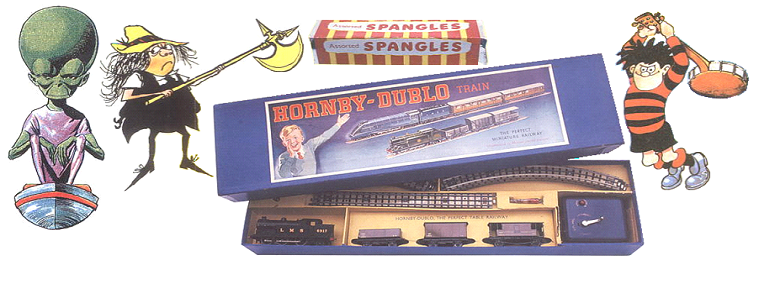
You must remember how great it was to be out throwing snowballs on a freezing winter’s morning, while still forced to wear short trousers. And the pleasant sensation of warming yourself up again in front of a real coal fire – radiant heat that roasted you on one side while leaving you shivering on the other – and those jolly red blotches that formed on your legs – and the happy agony of pins-and-needles as sensation returned to your fingers. These youngsters today just don’t know the thrill of scraping the frost off the inside of their bedroom windows each morning, or going outside in their dressing gowns to pour kettlefuls of boiling water over frozen pipes. I bet they’ve never had to wring their mum’s washing through the mangle, or get down on hands and knees to polish the lino. They’ve never waited in suspense for the sweep’s brush to pop out of the chimney, or been sent out with the coal shovel to scrap up the horse manure. I don’t suppose modern kids even wear smog-masks on their way to school. I mean this, photo-chemical stuff they talk about these days – that’s not real Smog! 1952 was proper Smog. See through it? You could hardly walk through it. And in case you missed it when you were indoors, the grown-ups would obligingly saturate the atmosphere a pea-souper of fag smoke.
We were so much healthier in those days, when people lived in asbestos-walled prefabs and ate bread and dripping. Sweets were rationed, of course, but clinic orange juice was so thick with sugar that we hardly needed them. Tooth decay? Nothing you couldn’t cure with a piece of thread and a slamming door. When the School Nurse dipped her steel comb in that pink stuff and ran it through our hair, she never found any nits. That’s because nits only like clean hair. We never washed our hair in the 1950s – just smeared on another layer of Brylcreem. O.K. once a week we were forced into the bath, and took a scrubbing brush to the accumulated mud and scabs on our knees. "You could grow potatoes on those knees!" cries Mum. I don’t know when I first discovered that tips of fingernails were supposed to be white, not black. When the air stank of coal-smoke and most buildings were encrusted with soot, black just seemed a natural colour for everything.
Of course, we didn’t have to worry about M.M.R. jabs in those days. We just had to have Measles, Mumps and Roubl … Roob … German Measles. Not to mention Chicken-Pox, Scarlet Fever, Whooping Cough, Asian Flu and, in my case, Pneumonia. Why bother with vaccinations when you can have the real thing? "Roger, go and visit your friend Colin. He’s in bed with a temperature of 160, vomiting and covered in painful purple pustules. We don’t know what it is, but you haven’t had it yet, so go and get yourself infected. It’s always best to catch these things when you’re young. And pop into the Cottage Hospital on the way back and get your tonsils taken out."
Happy days!
And do you remember the humour we found in Corporal Punishment – all those episodes of Dennis the Menace and Roger the Dodger, which always ended with the hero over Dad’s knee being beaten with a slipper. Then there was Nigel Molesworth’s guide to “Kanes I Have Known” and that wonderful TV series "Whacko!" about a cane-happy headmaster. One of the boys was called Wendover, purely so that Jimmy Edwards could use the line "Bend over, Wendover!" How we laughed! No one seems to think that physical abuse of children is very funny anymore.
Then there’s that other subject that no one does jokes about anymore. E.g. Laurel and Hardy’s:
“My father’s just died.”
“I’m sorry to hear that. How did it happen?”
“He fell through a trapdoor and broke his neck.”
“Was he working in the loft?”
“No. They were hanging him.”
Or the cartoon of the man dangling on the gallows, with the caption, "This suspense is killing me."
Or:
– "I say! I say! I say! Why do they never hang a man with a moustache?"
"I don’t know. Why do they never hang a man with a moustache?"
"It’s not strong enough. They have to use a rope!"
“I don’t wish to know that! Kindly leave the stage.”
People these days don’t even know the difference between “hung” and “hanged”.
Then there were those marvellous adventure playgrounds we had: the overgrown, ruinous ones that had been specially created for us by Werner Von Braun and his Doodlebugs. There was nothing metaphorical about the word bombsite in those days: all quite safe, apart from the broken glass, occasional bits of shrapnel and sheer drops into open cellars. I found an interesting metal object which would have made a perfect toy spaceship. It had fins at the back and everything! Unfortunately my homecoming cry of, “Look what I’ve found, Mum!” was greeted by parental hysterics; threats to throw it in a bucket of water, call the bomb squad, etc. It turned out to be the rear end of an incendiary. Later, she used it as a vase. And at the seaside we loved to splash about amongst the rusting remains of barbed-wire entanglements and tank traps. No wonder we never suffered from racial prejudice. We were still much too busy hating the Germans.
Those were the days.
Alec Bray
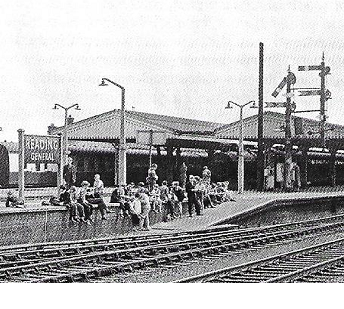
Nick Ware
When I was a schoolboy at Wells Cathedral School, we had a wonderful chemistry master, a Dr P.C. Merriman, who used to get more than a little over-enthusiastic with some of his chemistry experiments.One such was a project to generate phosphine gas. He told us it could be made from urine. So, he obtained a big empty oil drum, about 25, maybe 50 gallons capacity, and placed it in the senior boys’ playground. Beside it, an old chair so that we could reach to pee into the 3 inch opening at the top.
Boys will be boys of course, and we were used to having long distance pissing contests anyway (the roundheads always the winners), so we found it more fun to stand back and pee as high as you could, getting your pee to descend into the opening. If nothing else, the experiment encouraged us to drink more water!
Once eventually filled, the lid was placed firmly on, and it was left to fester for several weeks in the summer sunshine. Then, came the long awaited day when he declared it fully matured and ready to test for flammability. We all stood around eagerly as he lit a taper and approached the canister. With very little effort, the lid popped off, and instantly, a huge flame rocketed upwards as the can burst violently and showered stale boy-piss on everyone in the playground!
I always wondered whether that was what he intended, and what became of P.C. Merriman in later life.
Happy days, and not so happy days,
Dave Plowman
Anyone remember steam lorries? Still used in the late 50s by coal merchants in Aberdeen. So much more interesting than all those moped delivery drivers that now infest London.Alasdair Lawrance
I’m probably the only other one who does!Ellis and MacHardy were the coal merchants who had Fodens, but I couldn’t tell you the model – Sentinel rings a bell. With exposed chain drive, as I recall.
I also vividly remember tipper lorries full of snow discharging their loads into the harbour. It was the only way of keeping the roads clear.
Such public service is unthinkable now – you’d have to have snow analysts, method statements, permission from Harbour Authority as well as negotiating a price for disposal….
John Howell
I can remember coal lorries in Cardiff with big trays full of red hot cinders swinging on chains below the firebox. Vertical boiler at the front would probably make them Sentinels. This must have been earlier than 1950 because that’s when we moved to Shrewsbury, (ironically where Sentinels were made).Alec Bray
In the beginning there was Hornby ’0’ gauge clockwork. An 0-4-0 with proper coupling and connecting rods (not like the cheaper ones with just a single rod to mimic both!). I definitely had a tender locomotive and at least two tinplate coaches and various wagons.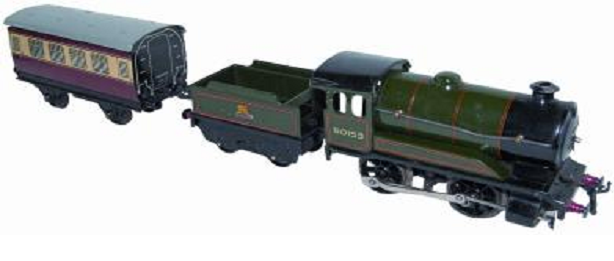
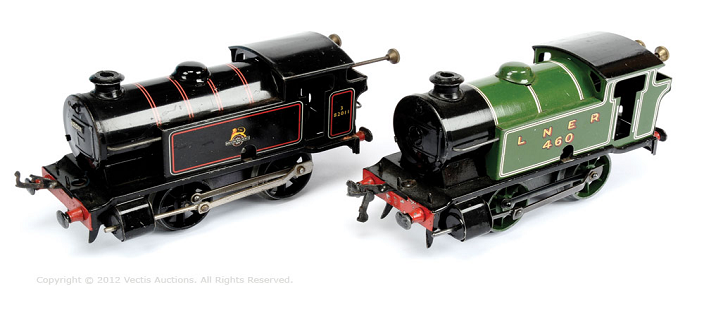
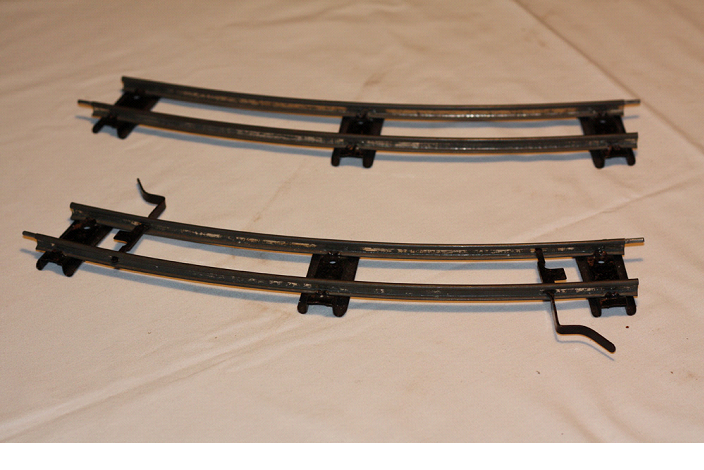
Budgie cast 0-6-0 tank locomotive
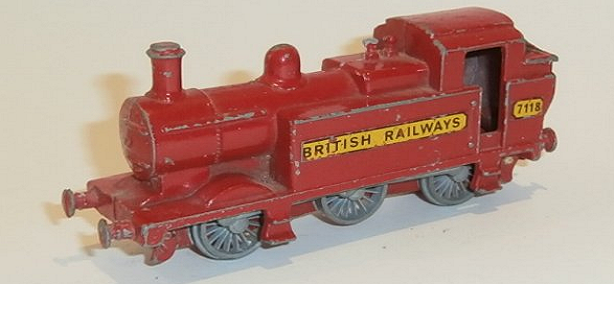
Rovex
The Princess Royal class was one of the first locos made by Rovex (which then got taken over by Tri-ang) and Princess Elizabeth was certainly my first ‘proper’ “00” gauge locomotive, complete with studs dropping down behind the rear coupled wheel to pick up the juice from the track:
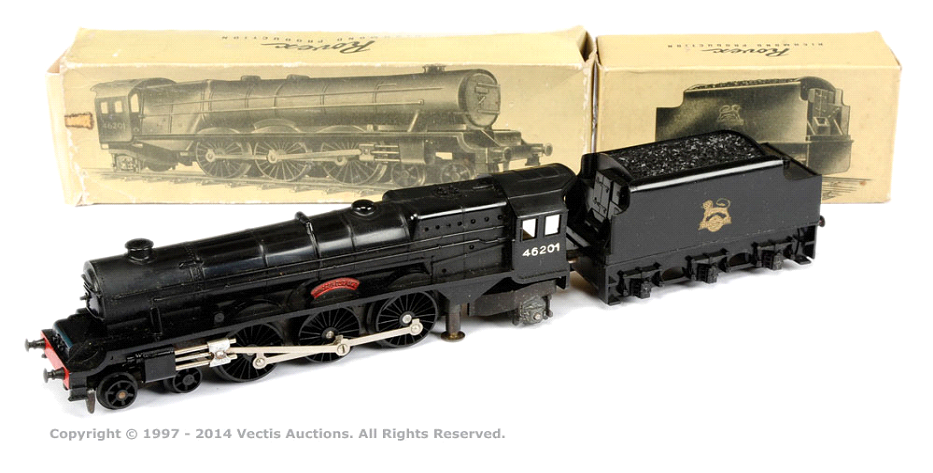
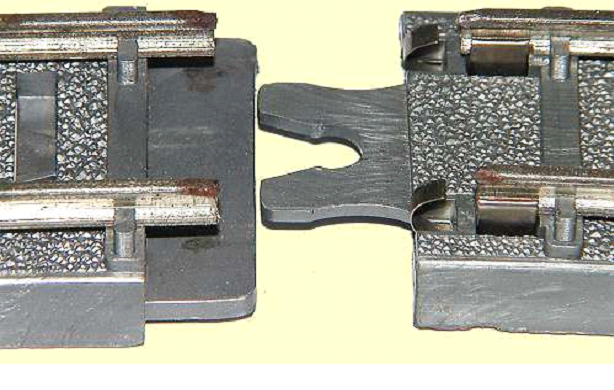
In this picture the gear wheel can clearly be seen!
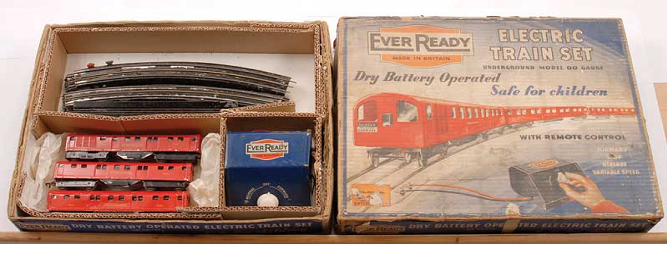
But then it was the biggie!! Hornby Dublo.
I first saw this set in the window of the cycle shop on Oxford Road – between Salisbury Road and Bedford Road, opposite what later became another favourite haunt of mine, Fotokine. I thought it was nine shillings and sixpence – it was nine pounds six shillings…
